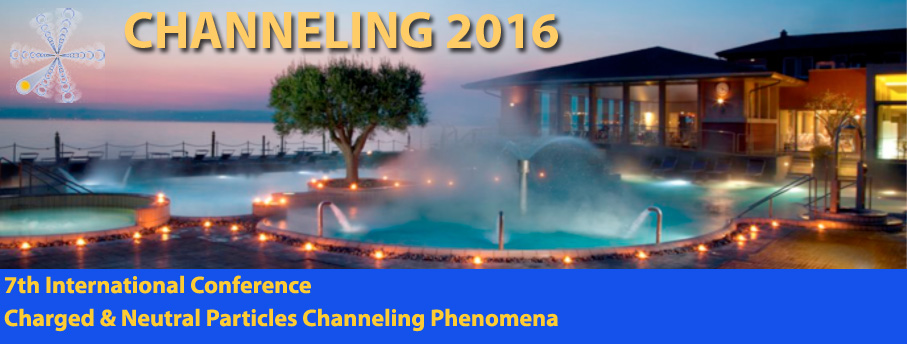Speaker
Dr
Subhendu Ghosh
(Inter University Accelerator Centre)
Description
The demand of the Terahertz radiation in various fundamental and applied research fields is increasing steadily. To address the requirement, a project to construct a compact Free Electron Laser by using a normal conducting photocathode electron gun has been conceived at Inter University Accelerator Centre (IUAC), New Delhi, India [1, 2]. In this facility, a single laser pulse will be split in to many micro-pulses which will produce a ‘comb beam’ of electrons [3, 4] from metal as well as from semiconductor photocathodes. The electrons produced from the photocathode will be accelerated up to an energy of ~8 MeV by a copper cavity operated at a frequency of 2860 MHz whose design is similar to those at BNL and KEK [5,6]. The resonance frequency of the copper cavity was chosen as 2860 MHz since the gun is planned to be replaced later by a superconducting photoinjector working at a multiple of 130 MHz. The separation of the laser micro-pulses will be varied by adjusting path length difference of the interferometer-type pulse divider and thus the separation of the electron microbunches will be also altered. For every separation of the electron microbunches, the magnetic field of the undulator and/or the electron energy will be adjusted in such a way, that the THz radiation can be tuned in the range of ~ 0.15 to 2.5 THz.
The 2.6 cell, 2860 MHz copper cavity to be used as electron gun has been fabricated, tested and waiting to be installed in the beam line. Other components like the Klystron/Modulator, the photocathode deposition mechanism, the laser system, the undulator magnet, various electromagnets, beam line components, etc. are being procured or under advanced stage of design. Production of the electron beam and the THz radiation from Delhi Light Source is expected to be demonstrated by the year 2017 and 2018, respectively. In this report the principle of generation of ‘comb’ beam, expected characteristics of super-radiant undulator radiation, the possible experiment by the radiation, etc. will be presented.
References
1. S. Ghosh et al., Proc. of FEL2014, Basel, Switzerland, p. 596.
2. S.Ghosh et al., Proc of IPAC 2016, Busan, Korea.
3. M. Boscolo et al., NIM A 577 (2007), page 409-416.
4. A. Aryshev, M. Shevelev, Y. Honda, N. Terunuma, and J. Urakawa, 2015 arXiv:1507.03302v1 [physics.acc-ph]
5. X. J. Wang et al., Nucl. Instrum. Meth. A356, 1995, p. 159.
6. A. Deshpande et al., Phy. Rev. Special Topic Accel. Beams, 14, 2011, 063501.
Primary author
Dr
Subhendu Ghosh
(Inter University Accelerator Centre)
Co-authors
Dr
Abhay Deshpande
(Society for Applied Microwave Electronics Engineering and Research)
Dr
Alexander Aryshev
(KEK)
Dr
Amit Roy
(Variable Energy Cyclotron Centre)
Mr
Bappa Karmakar
(Inter University Accelerator Centre)
Mr
Bhuban Sahu
(Inter University Accelerator Centre)
Dr
Debdulal Kabiraj
(Inter Unibersity Accelerator Centre)
Dr
Dinakar Kanjilal
(Inter University Accelerator Centre)
Mr
Gajanan Chaudhari
(Inter University Accelerator Centre)
Mr
Joshi Vipul
(Inter University Accelerator Centre)
Mr
Joydeep Karmakar
(Inter University Accelerator Centre)
Prof.
Junji Urakawa
(kek)
Dr
Masafumi Fukuda
(High Energy Accelerator Research Organization, KEK)
Dr
Narender Kumar
(Inter University Accelerator Centre)
Dr
Nobuhiro Terunuma
(High Energy Accelerator Research Organization, KEK)
Mr
Padmanava Patra
(Inter University Accelerator Centre)
Dr
Rakesh Bhandari
(Inter University Accelerator Centre)
Mr
SR Abhilash
(Inter University Accelerator Centre)
Mr
Sharma Ashish
(Inter University Accelerator Centre)
Dr
Shigeki Fukuda
(High Energy Accelerator Research Organization, KEK)
Dr
Triveni Rao
(Brookhaven National Laboratory)
Dr
Vaishali Naik
(Variable Energy Cyclotron Centre)

